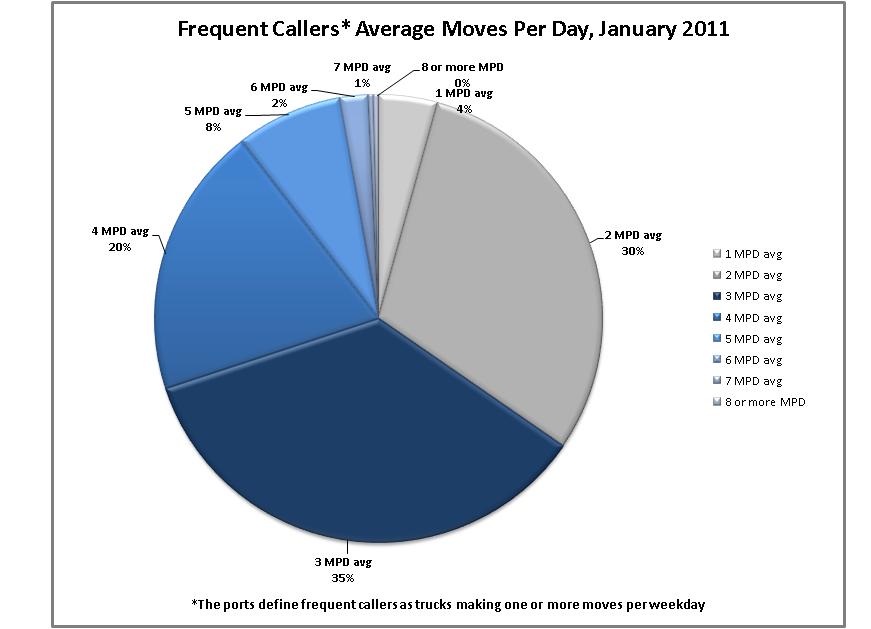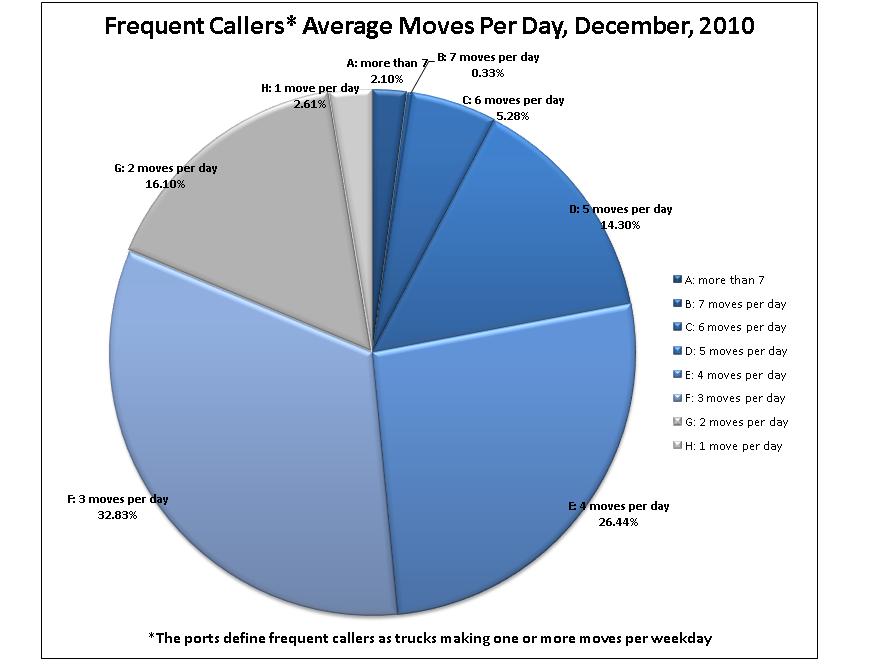Marine terminal operators in Los Angeles and Long Beach are closely watching turn times and congestion levels to evaluate any impact from the recent OffPeak schedule change. As of yet, we haven’t detected any unusual congestion as a result of the suspension.
Despite the suspension of the fifth shift, PierPASS continues to offer 55 OffPeak gates across 13 terminals, in addition to the 65 daytime gates, for a total of 120 gates per week for cargo pickup and delivery. Prior to the establishment of PierPASS in 2005, there were virtually no extra gates offered at the Ports beyond the regular daytime gates.
We believe that 55 extra gates a week is more than enough to handle current volumes and want to stress that there is still unused capacity during many times of the day and night shifts. The decision to suspend one OffPeak shift was made in light of the traditional seasonal decline in volume, knowing that there is plenty of unused capacity during both Peak and OffPeak shifts that could absorb a reduction in gates without affecting turn times or congestion, and that the fifth gate would be added back when cargo volumes warrant.
For perspective, let us compare the PierPASS schedule to that of other ports in the United States. The Ports of Seattle, New York, New Jersey, and Miami all offer similar Monday-Friday schedules of approximately 8:00 a.m. to 7:00 p.m., including breaks (exact hours differ), with no extra night or weekend gates like those provided by PierPASS in LA and Long Beach. These ports only offer services outside of regular hours with “special agreements” with the Port Authorities. The San Pedro Ports provide 120 shifts – of which 55 are extra gates – for cargo pickup and delivery each week. No other port in the country provides this capacity.
Terminal operators are taking steps to adapt to market conditions during the traditionally slow period of January to April. We will continue to closely monitor the volumes and adjust the OffPeak schedule as appropriate to ensure the viability of the OffPeak program and will look to reinstate the fifth extra gate when warranted. Please continue to visit the PierPASS website for the latest updates.


